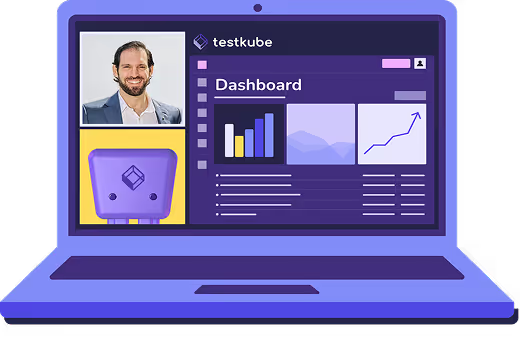Table of Contents
What Does Functional Testing Mean?
Functional testing is a software testing methodology that validates whether an application or system performs its intended functions correctly according to specified requirements and business logic. It is a black-box testing approach, meaning it evaluates software behavior from the outside, from the user's or system's perspective, without considering internal code structure, implementation details, or underlying architecture. Functional testing verifies that outputs, behaviors, and results match documented requirements and specifications, ensuring business logic is correctly implemented and user needs are met.
Key types of functional testing include:
- Unit functional testing: Validates that individual components, functions, or modules perform their specific intended operations correctly in isolation
- Integration functional testing: Ensures that multiple components, services, or modules interact correctly, exchange data properly, and work together as expected
- System functional testing: Checks overall system behavior by testing the complete, integrated application against functional requirements and use cases
- Acceptance testing: Validates that the entire system meets business requirements, user expectations, and acceptance criteria defined by stakeholders or customers
- Regression testing: Confirms that new changes haven't broken existing functionality or introduced unintended side effects
- Smoke testing: Verifies that critical functionality works correctly after builds or deployments before more extensive testing begins
- Sanity testing: Validates that specific functionality or bug fixes work as expected after changes
Functional testing commonly covers user interface validation, API behavior and contract compliance, database operations and data integrity, security features and access controls, error handling and edge cases, business rule enforcement, workflow orchestration, reporting accuracy, and third-party integration behavior.
Common methodologies and techniques include:
- Equivalence partitioning: Testing representative input groups or classes where all members should produce similar results, reducing test cases while maintaining coverage
- Boundary value analysis: Validating limits, thresholds, and edge cases at the boundaries between equivalence partitions where defects often occur
- Decision table testing: Verifying complex business logic with multiple conditions and outcomes by systematically testing all possible combinations
- State transition testing: Ensuring correct workflow behavior, state changes, and transitions between different system states or user journey stages
- Use case testing: Validating end-to-end scenarios that represent real user interactions and business processes
- Exploratory testing: Unscripted testing where testers use domain knowledge and creativity to discover issues beyond formal test cases
Why It Matters
Functional testing ensures that:
- Applications deliver features that match business needs, user requirements, and documented specifications accurately and completely
- User-facing workflows behave reliably, predictably, and intuitively across different scenarios, user types, and usage patterns
- Business rules, validation logic, compliance requirements, and regulatory standards are enforced correctly throughout the application
- Bugs, defects, and functionality gaps are caught before impacting production environments, real users, or business operations
- Changes and updates don't introduce regressions that break previously working functionality
- Quality gates are met before releases, reducing production incidents and support burden
- User experience meets expectations, building trust and satisfaction with the software product
- Return on investment is protected by ensuring delivered software actually solves the intended business problems
Without functional testing, critical features may fail silently, produce incorrect results, violate business rules, or behave unpredictably, causing user frustration, loss of trust, revenue impact, compliance violations, and damaged brand reputation.
Real-World Examples
- A development team updates a REST API endpoint to add new fields and uses Testkube to run Postman collections that validate request/response handling, schema compliance, error responses, authentication behavior, and backward compatibility with existing clients
- An e-commerce platform runs functional tests to verify shopping cart calculations, discount application logic, payment processing, order confirmation, inventory updates, and email notifications work correctly across multiple customer scenarios and edge cases
- An inventory management system executes comprehensive functional test suites to confirm stock calculations, reorder point triggers, order processing workflows, supplier integration, and reporting logic produce accurate results across multiple scenarios, locations, and product types
- A healthcare application uses functional testing to validate patient data entry, medical record retrieval, prescription management, insurance verification, and regulatory compliance features meet strict accuracy and security requirements
- A financial services application runs functional tests to ensure transaction processing, balance calculations, interest accrual, regulatory reporting, and fraud detection rules operate correctly under various account states and transaction patterns
How Functional Testing Works with Testkube
Testkube supports comprehensive functional testing by providing a Kubernetes-native platform for executing, managing, and analyzing functional test suites:
- Running diverse testing tools: Executes Postman collections, REST Assured tests, Playwright scripts, Cypress tests, custom scripts, and other functional testing frameworks inside Kubernetes clusters with consistent environments
- Automating functional test execution: Integrates functional tests as part of CI/CD pipelines, triggering tests automatically after deployments, on schedules, or in response to specific events
- Centralizing results, logs, and artifacts: Aggregates test results, execution logs, screenshots, videos, network traces, and other diagnostic artifacts in a unified platform for comprehensive observability and analysis
- Supporting multiple test types: Provides a single platform for API testing, UI testing, database validation, security testing, performance validation, and integration testing without requiring separate tools or infrastructure
- Environment consistency: Ensures functional tests run in isolated, reproducible Kubernetes environments that closely mirror production configurations, reducing environment-specific issues
- Parallel execution: Runs functional tests in parallel across multiple pods, nodes, or clusters to accelerate feedback loops and reduce total test execution time
- Test orchestration: Defines complex test workflows with dependencies, conditional execution, and multi-stage validation sequences for comprehensive functional coverage
- Real-time monitoring: Provides live execution status, streaming logs, and immediate feedback on functional test results during pipeline runs
- Historical analysis: Tracks functional test results over time to identify trends, regression patterns, and quality improvements across releases
- Integration with development workflows: Connects with GitHub, GitLab, Jenkins, ArgoCD, and other development tools to embed functional testing throughout the software delivery lifecycle





